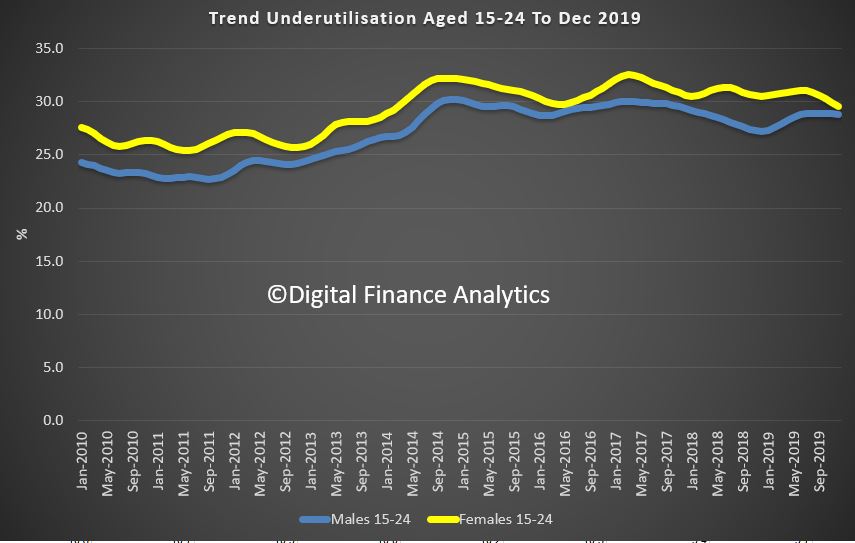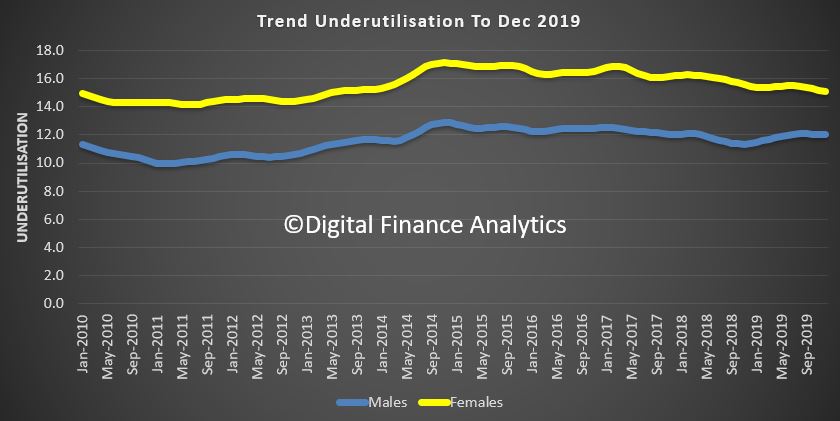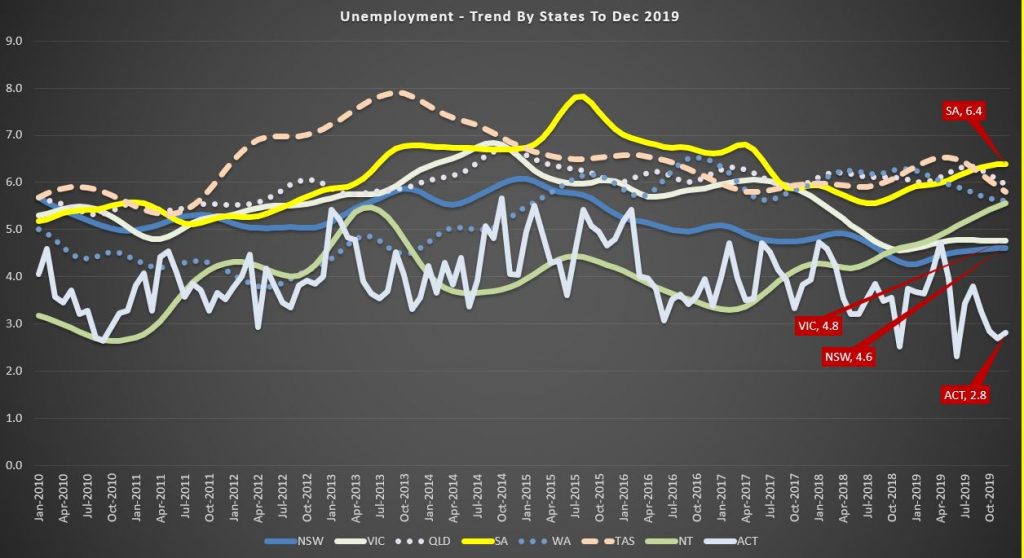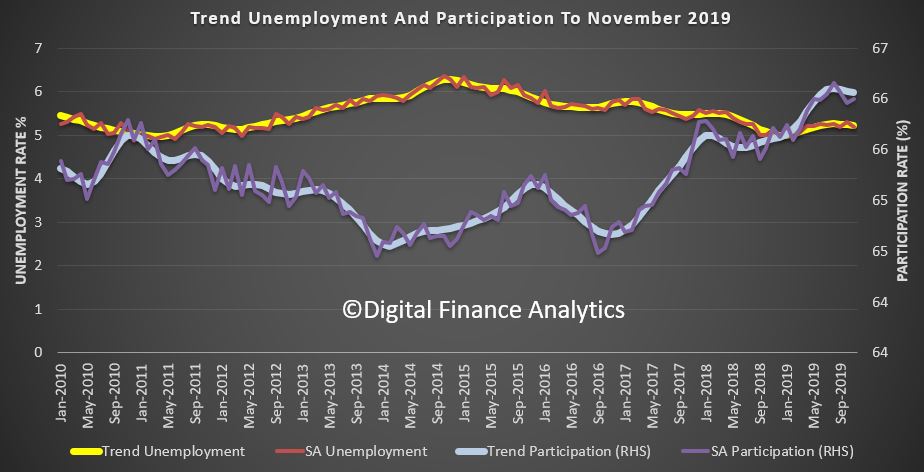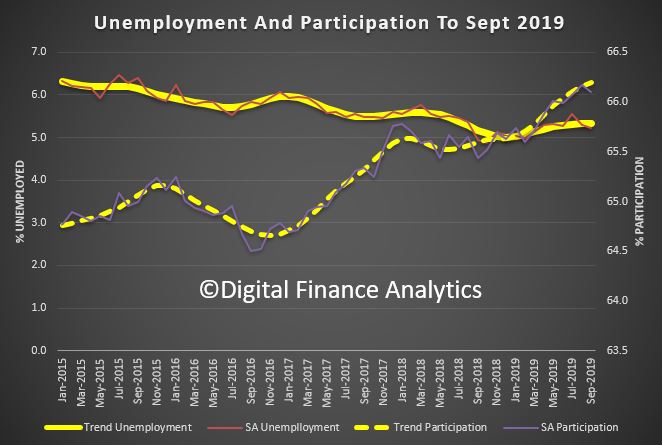Australia’s trend unemployment rate remained steady at 5.1 per cent in February 2020, from a revised January 2020 figure, according to the latest information released by the Australian Bureau of Statistics (ABS) today.
ABS Chief Economist Bruce Hockman said: “The trend unemployment rate remained steady at 5.1 per cent for a third consecutive month.”

There was no notable impact on February 2020 Labour Force statistics resulting from the recent bushfires or COVID-19. The February reference period was in the first half of the month and pre-dates the notable increases in confirmed cases in Australia of COVID-19.
Employment and hours
In February 2020, trend monthly employment increased by around 21,000 people. Full-time employment increased by around 13,000 and part-time employment increased by around 8,000 people.
Over the past year, trend employment increased by around 241,000 people (1.9 per cent), below the average annual growth over the past 20 years (2.0 per cent).
Full-time employment growth (1.5 per cent) was below the average annual growth over the past 20 years (1.6 per cent) and part-time employment growth (2.7 per cent) was also below the average annual growth over the past 20 years (3.0 per cent).
The trend monthly hours worked decreased by less than 0.1 per cent in February 2020 and increased by 0.8 per cent over the past year. This was lower than the 20 year average annual growth of 1.6 per cent.
“We have seen a decrease in the trend hours worked in recent months, even though employment has continued to grow. This largely reflects a fall in the total hours worked by men”, added Mr Hockman.
Underemployment and underutilisation
The trend monthly underemployment rate remained steady at 8.6 per cent in February 2020, and increased by 0.3 percentage points over the past year.
The trend monthly underutilisation rate also remained steady at 13.7 per cent in February 2020, an increase of 0.4 percentage points over the past year.
States and territories trend unemployment rate
The monthly trend unemployment rate increased in Victoria and decreased in Queensland, South Australia and Tasmania in February 2020. The unemployment rate remained steady in all other states and territories.
Over the year, unemployment rates fell in Queensland, South Australia, Western Australia, Tasmania and the Australian Capital Territory. Unemployment rates increased in New South Wales, Victoria, and the Northern Territory.
Seasonally adjusted data
The seasonally adjusted unemployment rate decreased by 0.2 percentage points to 5.1 per cent in February 2020, while the underemployment rate remained steady at 8.6 per cent. The seasonally adjusted participation rate decreased by 0.1 percentage points to 66.0 per cent, and the number of people employed increased by around 27,000.
In original terms, the incoming rotation group in February 2020 had a higher employment to population ratio than the group it replaced (62.7% in February 2020, compared to 61.8% in January 2020), however it was lower than the sample as a whole (62.8%). The incoming rotation group had a higher full-time employment to population ratio than the group it replaced (43.6% in February 2020, compared to 43.4% in January 2020), and was higher than the sample as a whole (43.2%).
The incoming rotation group had a higher unemployment rate than the group it replaced (5.9% in February 2020, compared to 5.3% in January 2020), and was higher than the sample as a whole (5.5%). The incoming rotation group had a higher participation rate than the group it replaced (66.6% in February 2020, compared to 65.2% in January 2020), and was higher than the sample as a whole (66.5%).


